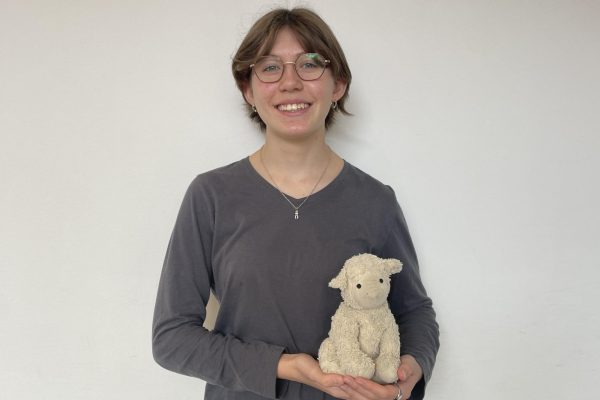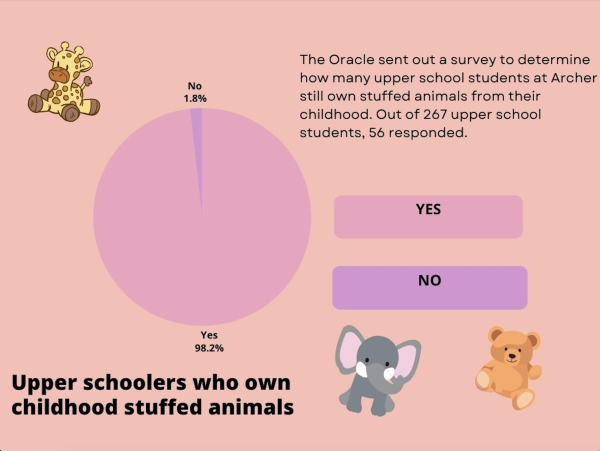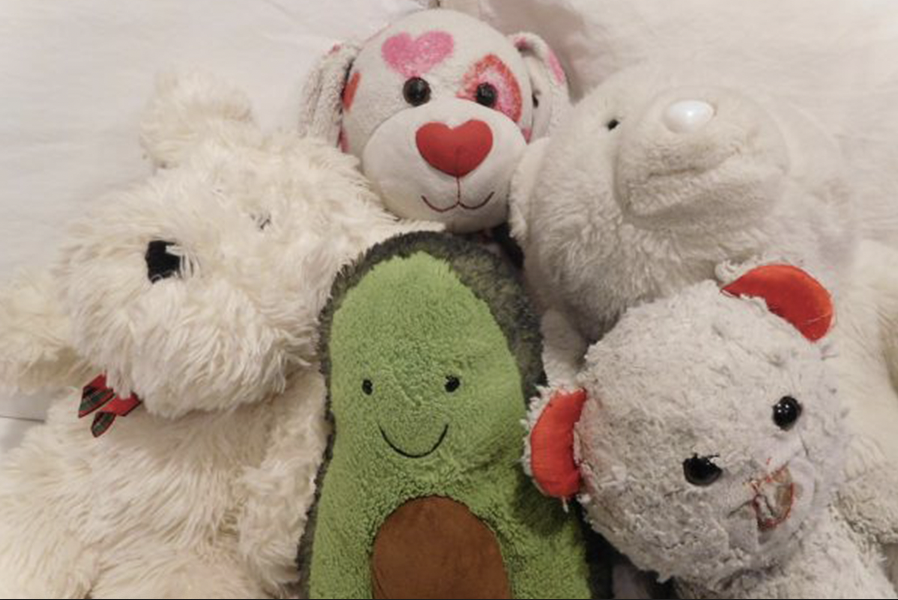No matter the pattern, size or shape, it is not unusual to see a child carrying around a stuffed animal. Stuffed animals are placating objects that children have in common, and they are a staple of many kids’ childhoods. Besides being a toy that’s fun to play with, stuffed animals can help improve mental health among children, teenagers and adults alike.
Stuffed Animals’ Impact on Childhood Mental Health
According to the International Collegiate Journal of Science, stuffed animals are vital in developing a child’s sense of security and help children in times of stress. The mere feeling of cradling something soft and relaxing can soothe young children, as well as help ebb anxiety and fear.
Developmental psychologist Dr. Esther Hess works at The Center for the Developing Mind, where she treats children and adolescents impacted emotionally or with intellectual disabilities. She said stuffed animals are transitional objects, helping a child in their journey from dependence to independence.
Hess said stuffed animals also provide a sense of reality to children by grounding them when they are feeling stressed. They can also help cultivate their creativity and imagination. Hess said children often take their stuffed animals everywhere they go.
“The animal, in a certain sense, experiences life the way the child does. And oftentimes, the child can then use make-believe to have in their minds a dialogue with that stuffed animal about how their day has been going,” Hess said. “No matter what, stuffed animals are always there to provide security … [They are] sometimes a displacement for anger, sometimes displacement for tears.”
According to Hess, stuffed animals have more uses than just providing emotional support, as they can also be a companion to look to in hard times.
“Sometimes, the stuffed animal can be a representation of what’s going on in the child’s life — for example, a medical issue,” Hess said. “And it’s not the child who’s going through the medical issue, but the stuffed animal is going through the medical issue, so there’s a lot of different ways that the stuffed animal can take on almost magical qualities.”
Bringing Stuffed Animals into Teenage Years and Adulthood
Although stuffed animals are helpful in the process of a child’s growth, Hess said many people develop a strong attachment to their childhood stuffed animal that can continue through adolescence and even adulthood.
“Eventually, what happens is that as the child gets more secure in their own world and begins to have different attachments, they don’t need their beloved [stuffed animal] quite as much,” Hess said. “But I’ve had several cases where a stuffed animal stays in a very important part of a child’s life for quite a long time.”
Similarly, Phoebe Gustafson (’27) said her childhood stuffed animals remain an important part of her life, even though she is a teenager.

“Childhood is fleeting,” Gustafson said, “but I still have all these stuffed animals, and they hold memories.”
Hess said stuffed animals create a sense of shielding and protection.
“[Stuffed animals] create security at a very early age,” Hess said. “It has all the special smells and squeezes and touches that reassure the child that they are okay. Also, it reassures the child where they are in space and time, meaning that it reduces anxiety.”
A study conducted from 2016 to 2019 at The Centers for Disease Control and Prevention reported that approximately 6 million children aged 3-17 had ADHD, 5.8 million had anxiety, 5.5 million had behavior problems and 2.7 million had depression. According to Hess, stuffed animals can help ease these stresses and anxieties.
Additionally, according to Dr. Radha Modgil’s column on INews, stuffed animals can provide comfort in adult life, even if only a small amount. Hess said some of her clients still own childhood stuffed animals because they were important in comforting them in childhood.
“I’ve had adults who may not carry their beloved stuffed animal with them. But they still keep it in a special spot because that stuffed animal still represents a very significant part of their lives,” Hess said.
PR Newswire reports that a Build-A-Bear survey conducted in 2017 showed that 56% of respondents have owned their favorite stuffed animal for more than two decades, and more than 70% said they plan to keep their stuffed animal forever.
A New York Times personal essay about a connection with stuffed animals received an overwhelming amount of comments. Later, a selection of these comments was published in an article.
In the comments, people who had experienced serious illness and trauma said their stuffed animals helped them cope in the hospital or after the deaths of loved ones. Some said that their stuffed animals felt like a symbol of hope in difficult times. Stuffed animals also helped people through more mundane stresses, such as graduate school exams, homesickness and the loneliness of business travel.
Hess explained adults often use a more “sophisticated” choice for displacing their feelings: pets instead of stuffed animals. She also said, even though pets can replace stuffed animals in adulthood, the fundamental point is being able to access something that can demonstrate how a person feels.
“When it comes right down to it, really what it is, is the ability to have an object outside of yourself,” Hess said. “It’s to have a lot of your own internal representations. So the answer directly is yes, it’s really important.”
Listen to the audio clip below to hear Hess discuss the use of stuffed animals in adulthood.
Stuffed Animals and Archer
The Oracle sent out a survey to determine how many upper school students at Archer still own stuffed animals from their childhood. Out of 267 upper school students, 56 responded. Ninety-eight percent of respondents stated they still own a stuffed animal. Responses included that stuffed animals are comforting, stress-relieving, a friend, a source of safety and a source of emotional support.
Gustafson said she is happy she still owns stuffed animals from her childhood.

“They [provide] a calming feeling,” Gustafson said. “They’re a comfort item.”
Similarly, Remi Cannon (’24) said their stuffed animals bring them security and ease. As a senior, Cannon said they are currently deciding if they want to take their stuffed animals to college with them.
“Hugging them at night is definitely a big comfort,” Cannon said. “I find when I am like hugging something, it does help when I don’t have anyone else to cuddle with. [At college], I wouldn’t be embarrassed by them. If anything, the only hesitancy to bring them to college would be them getting damaged or lost.”
Bringing stuffed animals to college is a way to safeguard emotional and sentimental childhood memories. Cannon said they hold on to their stuffed animals dearly.
“I consider [my stuffed animal] a childhood relic,” Cannon said. “I will find a way to somewhat preserve it, just because it’s a piece of me.”










